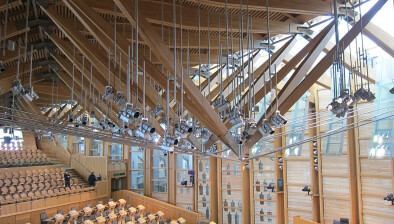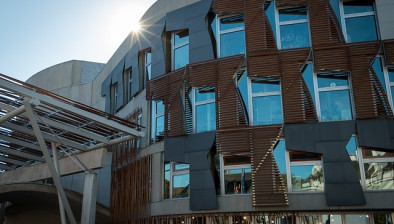Business unites to voice disquiet over 5 per cent leap in Scottish Planning Fees

Four of Scotland’s leading sectoral trade associations have combined to voice disquiet at the Scottish Government’s decision to increase fees for planning applications by more than twice the rate of inflation.
The four trade associations – the British Aggregates Association, Homes for Scotland, Scottish Retail Consortium, and Scottish Tourism Alliance – have spoken out ahead of the 5 per cent increase which will come into effect on 1 November. It follows a previous 20 per cent rise in fees introduced in 2013.
Richard Bird, secretary of the Stirlingshire-based British Aggregates Association, said: “We already have concerns about the lack of sufficiently experienced planners to deal with mineral planning applications, and this further bumper leap in fees will only exacerbate that.”
Homes for Scotland’s head of planning strategy, Blair Melville, said: “Homes for Scotland members have always stated that they would be willing to pay higher planning application fees in return for a quality service. However, the Scottish Government’s own Planning Performance Framework monitoring shows a system which falls far short of the standards of customer service, speed and efficiency that the country needs if new development is to stimulate economic growth.
“There are some bright spots and good authorities, but too many are still offering inadequate service, and the worst-performing Councils are undoubtedly acting as a drag on development. In addition, when public service spending cuts are continuing, we have no confidence that increased planning application fees will be used to improve staffing or service levels in planning departments.”
David Lonsdale, director of the Scottish Retail Consortium, added: “Retailers want to see an effective and well-resourced planning system, one that facilitates investment in new or existing retail premises. However it is far from clear that this further above-inflation rise in fees, coming on top of last year’s hefty 20 per cent increase, has been accompanied by a commensurate and demonstrable improvement in service to retail applicants.”
Marc Crothall, chief executive of the Scottish Tourism Alliance, said: “Scotland’s tourism industry has enjoyed a strong 2014. However if we are to maximise the momentum of the past 12 months and achieve the growth ambition set out in the national tourism strategy, then investment into many existing businesses and new assets is essential.
“Managing costs remains a challenge and commitments to tourism investment need surety that the upfront costs are justified. The industry has yet to be convinced of the need for this further above inflation rise in planning fees. Tourism firms will expect to see improvement in the service provided and especially in the pace of processing applications.”

Homes for Scotland has also warned that proposals for the new Land and Buildings Transactions Tax risk penalising families and aspirational movers by detrimentally impacting home buyers purchasing at mid to higher values.
Figures revealed that the new system, which is due to replace Stamp Duty in April 2015, will see all buyers purchasing homes over £325,000 worse off.
Chief executive Philip Hogg said: “Whilst we are naturally keen to see support directed to vitally important First Time Buyers and those on the lower rungs of the housing ladder, we are concerned that proposals to raise the nil rate band together with the introduction of 10 and 12 per cent bands for homes over £250,000 will prove too punitive on the middle and upper market which generally comprises families with changing needs and aspirational movers.
“It cannot simply be assumed that these households are able to raise the significant additional funds required at the proposed new rates. As such, we are concerned this will result in damaging market stagnation at a time when Scotland already has an acute housing shortage.
“Like all buyers, this customer group is critical to the sustained recovery of a healthy, well-functioning housing market, particularly in areas such as Edinburgh, East Renfrewshire and Aberdeen which face great demand for family housing but where supply is low and house prices higher. These areas are likely to be badly impacted with a reduction in sales anticipated as a consequence.
“It is therefore imperative that the Scottish Government promotes a tax framework which allows movement up and down price levels without any artificial barriers and enables Scotland to remain competitive with the rest of the UK.
“That is why we are proposing in our submission to the Scottish Parliament Finance Committee that an additional band between £250,000 and £500,000 be introduced. We also believe that the tax rate on land purchases remain capped at 4 per cent given that it is already more expensive to build homes north of the border.”













